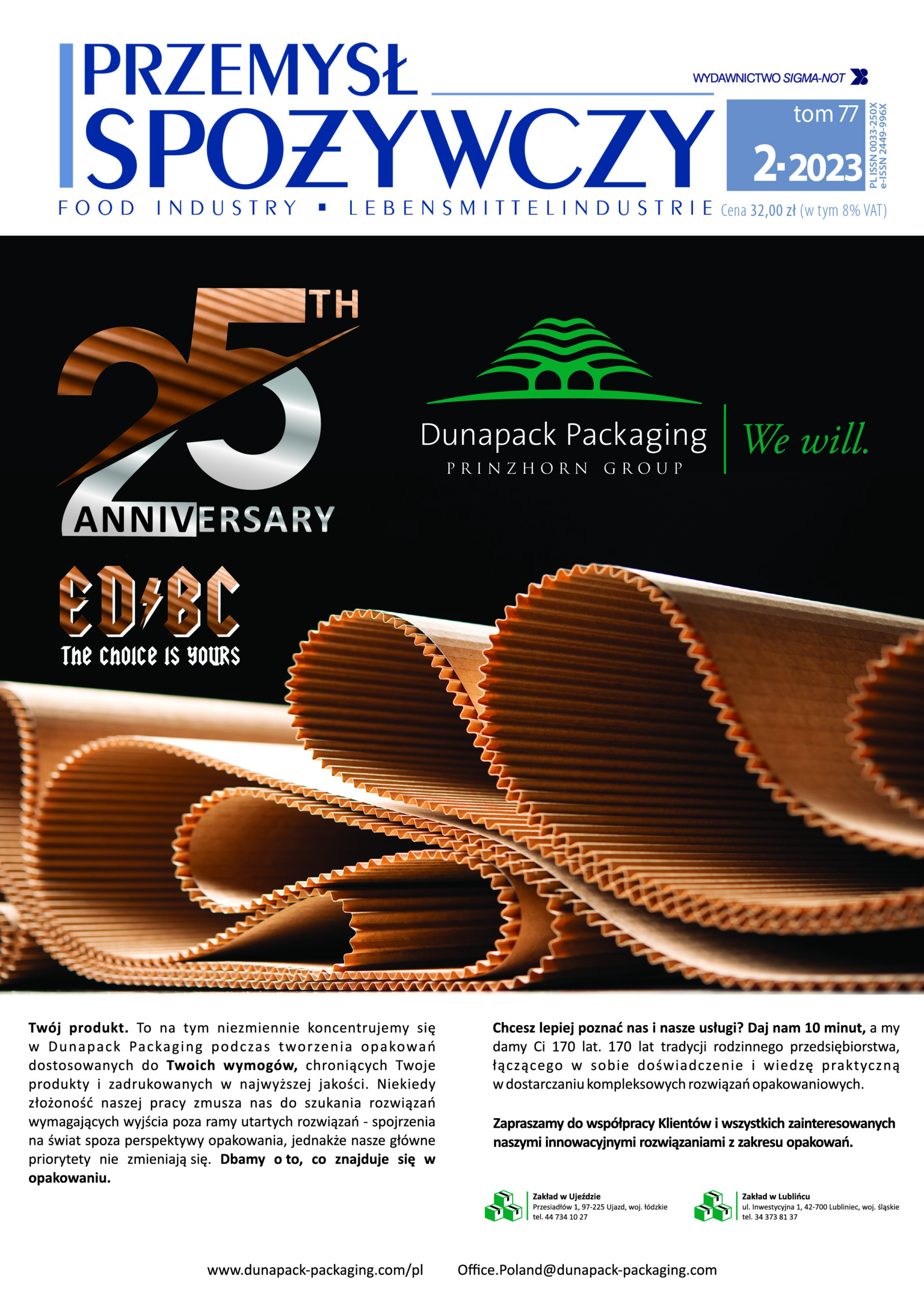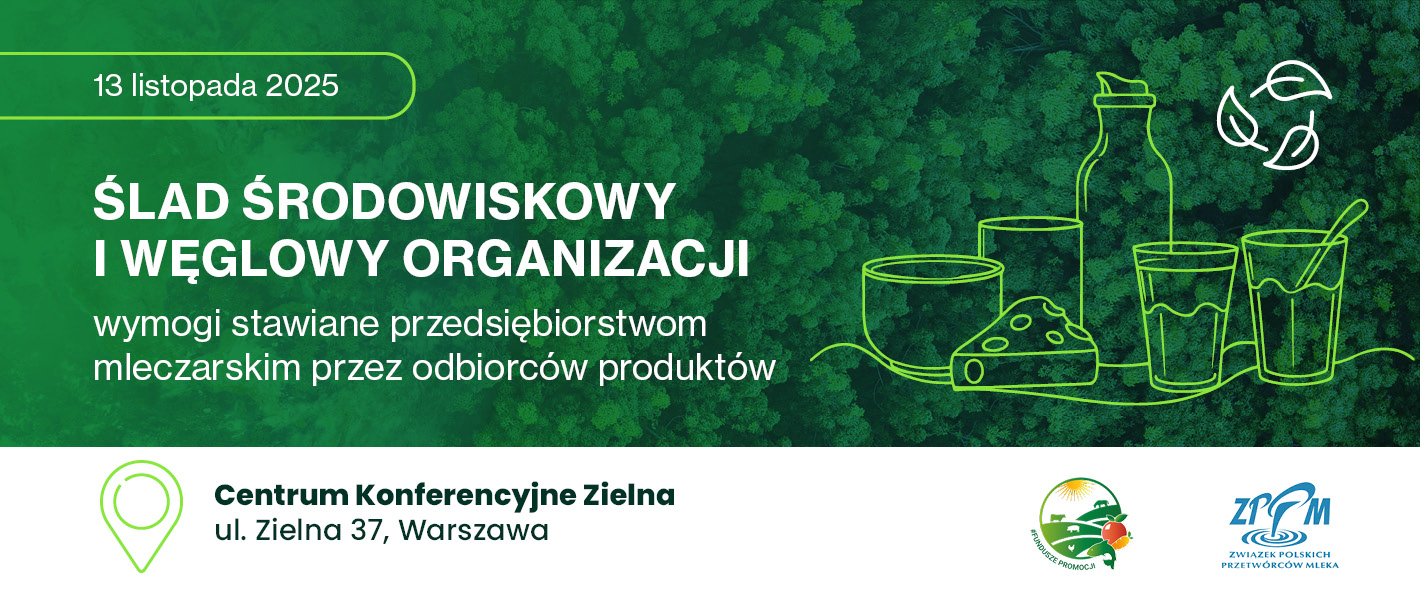ECONOMY
- The Dynamics of Change in the Food Retail Trade Market in Poland (DOI10.15199/65.2023.2.1)
Katarzyna Kosior 2
Grocery retail trade accounts for almost one-third of the retail market in Poland. Despite the difficult economic situation – the shock caused by the COVID pandemic, the war in Ukraine and rising inflation – the agri-food retail industry has been witnessing high growth rates in recent years. The organized retail chains have remained the main market participants. The article presents the entity, organizational and ownership structure of the food retail industry, including the degree of concentration and market shares of the largest retail chains selling agri-food products in Poland.
KEY WORDS: grocery retail trade, retail chains, concentration, market shares, Poland
LAW
- Active Packaging in The Food Industry – Part 2 – Legal Aspects (DOI10.15199/65.2023.2.2)
Mikołaj Trusiński, Paweł Wojciechowski, Sabina Galus, Magdalena Chądzyńska, Małgorzata Nowacka 10
Along with technological development, increasing care for the natural environment and the popularization of practices limiting the amount of food wasted, manufacturers have started to market packaging that affects the product. Such packaging that interacts with food is active packaging, which in recent years has been widely used, in particular for packaging fresh products. However, such packaging required more restrict regulations in terms of ensuring packaging safety, which involves the release of packaging components into the packaged food or its environment. Moreover, this release process must be properly planned to extend the shelf life or the condition of the packaged food. Therefore, knowing and complying the legal requirements in this area is extremely important.
KEY WORDS: active packaging, active coatings, food, legal aspects
TECHNICS-TECHNOLOGY
- Influence Of Selected Processes Used in Milk Processing on Survival of Listeria monocytogenes in Dairy Products (DOI10.15199/65.2023.2.3)
Piotr Śmigiel, Jarosław Kowalik, Marika Bielecka 14
The selection of appropriate technological processes and the risk analysis of critical control points (HACCP) are crucial to providing consumers with safe dairy products. One of the most frequently identified biological hazards in dairy products is the presence of the pathogen Listeria monocytogenes, which is the etiological factor of listeriosis – food poisoning. The incidence vector of listeriosis is increasing worldwide. Dairy products are still one of the most important sources of the transmission of this zoonosis. Listeria monocytogenes present in final dairy products can originate from the raw material or the environment of the processing plant, including equipment, personnel and cross-contamination between final products and raw materials. There is a real concern that L. monocytogenes may pose a threat to the public health. This study describes the scale of the poisoning problem. L. monocytogenes as a result
of consumption of dairy products and the possibilities of limiting its survival as a result of proper milk processing.
KEY WORDS: Listeria monocytogenes, technological process, dairy product, listeriosis
FOOD-FEEDING
- Yoghurts As Superfood (DOI10.15199/65.2023.2.4)
Aneta Brodziak, Tomasz Czernecki, Joanna Wajs, Maria Zuba-Ciszewska, Jolanta Król 20
In the recent years, products referred to as “superfood” have gained in importance, including, among others, yoghurts – fermented milk products. The “superfood” includes not only a natural yoghurt, especially with the participation of probiotic strains, but also yoghurts containing additives of plant or animal origin. The bioactive compounds contained in this food can improve overall health, strengthen the immune system, increase the production of serotonin and other hormones and promote the efficient functioning of the human body. More and more reports on this topic can be found in the literature. As “superfood” additives to yoghurts, the following are currently proposed, among others: fruits (for example, goji berries, pomegranate, acerola), grains (oat, amaranth), seeds (chia, carob, hemp), roots (ginger, turmeric, burdock), algae (spirulina, chlorella) or bee products (pollen, royal jelly). These products are starting to appear on the market more and more often, and in the future their offer will probably increase, which is in the interest of both producers and the consumers.
KEY WORDS: fermented milk beverages, plant additives, probiotic bacteria, health
- Listeria monocytogenes as a Food Safety Criterion (DOI10.15199/65.2023.2.5)
Michał Tracz, Agnieszka Jackowska-Tracz 27
Commission Regulation (EC) No 2073/2005 on microbiological criteria for foodstuffs introduces two types of microbiological criteria: Food Safety Criteria (FSC), which answer the question of whether a product is safe, and Process Hygiene Criteria (PHC), which provide information whether the hygienic status of a production process is satisfactory. Each microbiological criterion specifies: 1) type of food, 2) microorganisms/their toxins, metabolites, 3) sampling plan, 4) limits, 5) reference test method and 6) stage of application of the criterion. As many as three food categories have been specified for Listeria monocytogenes, the common feature of which is that all three categories belong to the ready-to-eat (RTE) group: category 1) RTE foods for infants and special medical purposes, category 2) RTE foods that support L. monocytogenes growth, and category 3) RTE foods that do not support L. monocytogenes growth. While the first category raises no doubt, the interpretation of the next two poses a real challenge for both food manufacturers and official control authorities. This paper presents an algorithm for dealing with the selection of the limit for L. monocytogenes in RTE foods and how it relates to the different steps in the implementation of HACCP principles.
KEY WORDS: Listeria monocytogenes, RTE, food safety
EXPERT
- Aromatic substances responsible for the taste and aroma of unflavoured premium fruit wines
Robert Wieprzkowicz-Rzewuski 31
The production of fruit wines in Poland has a centuries-old tradition. Various types of fruit, both farmed (apples or plums) and wild (barberry), have been used in domestic winemaking for centuries. The process of producing fruit wines is no different from the process of producing grape wines. It is based on the same biochemical foundations, such as the transformation of sugars into ethanol or the formation of aromatic compounds. The production of fruit wines requires the same activities and treatments as the production of grape wines. The processes are carried out in similar conditions, while maintaining the same sanitary and quality requirements.




